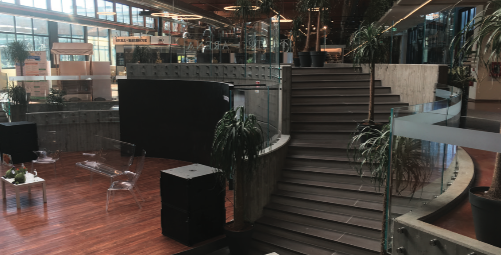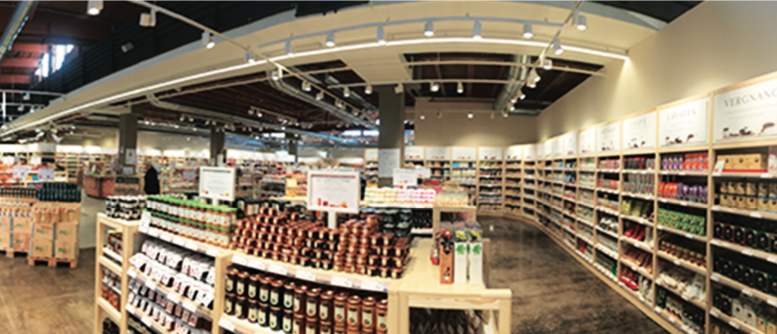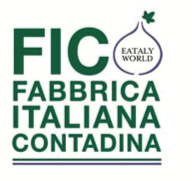Visiting FICO, the Italian Food Factory, can be an adventure for everyone, young and old. Its vastness seems to know only the boundaries of the more or less sizeable wallets, between streams of oil and wine, and farm animals exhibited as well-guarded treasures. If you are lucky enough, you may find right away the correct entrance easily confusing with the exit of this 100,000-square-metre complex. It is misleadingly (perhaps not coincidentally) located near the first parking lot where you come across from the gate. Right from the entrance, guests actually walk through an arch of apples (a sign indicating they are not to be eaten or brought home) and invitations to respect organic food. From that point, if you are blind, you are on your own like in an actual wheat field. There is no desk dedicated to persons with disabilities, but the lack of attention is shared with non-disabled people: when we visited, I located the information point... at the exit. It is easy enough to walk around the sprawling complex particularly for those using a wheelchair.

To the enjoyment of visitors, tricycles can be used through the complex: more than an incentive for physical activity, invitations to consumerism filter through, as evidenced by the deep basket ready for goods to be purchased. An itinerary designed for the visually impaired would have been appreciated, as it is not possible to understand what is being exhibited in the individual stands. There are no tactile indications even in restaurants or refreshment points. Of course, one could always rely on the sense of smell to identify mortadella or baked goods. But we doubt that the creators of the agri-food park that prides itself on being the world's largest have relied solely on the evocative capacity of the perfumes of organic products to make up for the absence of some support for the benefit of blind visitors. Neither was it worth asking the FICO communications office for specific information, since we have yet to receive a reply to the email sent to the address promptly provided by the website's contact point. The exploration of the theme park did not provide further information, revealing the vagueness of contents drowned in the vastness of the facilities. Ultimately, we arrive at the end of the route almost by inertia, without particular motivation, as there is so much to be seen without a proper itinerary. Of course, visitors are totally free to follow their interests or cultivate their long-time preferences or make new discoveries: however, one would have expected to be taken by the hand to be guided in the discovery of the secrets of genuine food and production processes respectful of the guidelines so dear to the owner of Eataly, at the core of this gigantic place.

Nor are suggested regional or merchandise criteria: the Valtellina cheese can be found in front of the Florentine producer. But if you want to find a specific product, you need to be ready for a trek and zigzag back and forth. And when you reach the area dedicated to the sale of products, it is possible to be caught up by some fantastic condiment made of Sicilian onions and tuna but having to give up buying the organic bread on which to spread it because you have to almost walk right back at the beginning to fetch it. And so you have to settle with the packaged taralli or the Trentino bread also good for clay-pigeon shooting (but really good!). We admit that we were not able to find the much talked about courtyard animals, able to donate raw materials for cheese, eggs and, of course, meat: simply, we did not see any clear indications to find our way. We came across some olive trees, surrounded by huge tractors, but the animals were hidden from our sight. We must have been careless in our search, but we can assure that we did try. Even the washrooms, though very clean, were a bit difficult to find: on one occasion, there was no washroom for disabled persons, obviously located elsewhere.

The feeling is that the "free" experience is deliberately left without logistical references by the designers of the agro-food park who focused instead on the targeted initiatives and thematic routes dedicated to various types of users (students, children, for example), for which there was a fee. The dinners in the dark, for example, to which the Institute for the Blind Francesco Cavazza collaborated, where patrons enjoy dishes relying on the other senses as they cannot depend on their sight. When reaching the exit, you instinctively turn around and wonder if FICO is a missed opportunity to give sense to the impressive flavours and traditions of our nation. Or, rather, just an aisle like any other in a large supermarket (the largest supermarket in the world, one might say) in which you do not perceive the love of the producer, but only the sparkle of marketing.

.png)



.png)